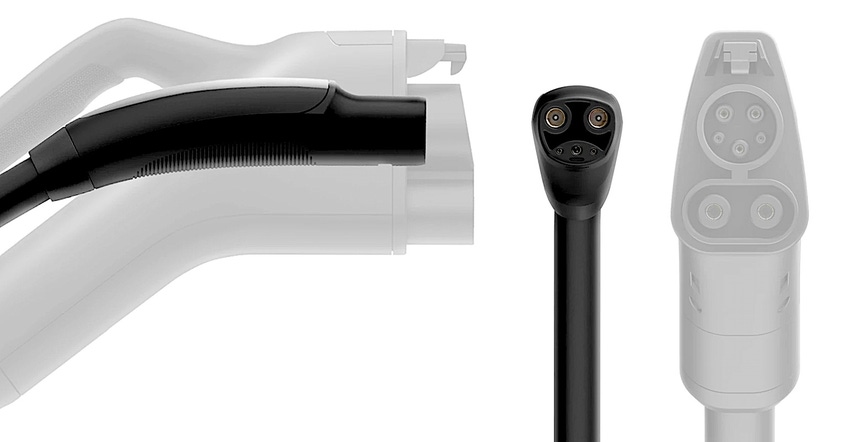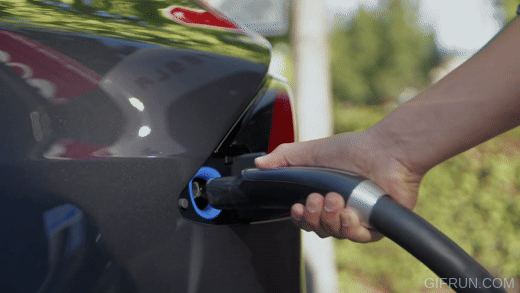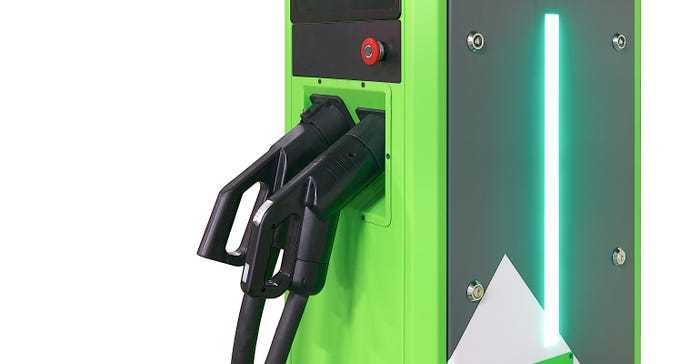Ford/Tesla Supercharger Announcement Ignites EV Charging Standard War
Ford EV drivers will be able to use Tesla’s Supercharger network, but the company’s switch to Tesla’s charging plug could kill the current CCS industry standard.
May 26, 2023

Ford CEO Jim Farley and Tesla boss Elon Musk participated in a joint announcement Thursday night that Ford EVs will soon have access to Tesla’s Supercharger high-speed charging network.
Overlooked in the welcome news that Ford drivers will be able to use Tesla’s larger and more reliable charging network is the fact that Ford committed to switching its EVs from today’s Society of Automotive Engineers (SAE) Combined Charging System (CCS) standard charging plug to Tesla’s North American Charging System (NACS) plug. “We’re totally committed to the NACS interface itself going forward,” Farley stated.
This will mean that non-Tesla EV owners could be plunged into a confusing standards battle between groups, reminiscent of the Sony Betamax versus VHS videotape battle of the 1980s. The stakes are higher here, considering the much higher cost of EVs versus VCRs and the prospect of being stranded at an incompatible charger with an EV in comparison to the prospect of being at a video rental store with the wrong format of tapes for the evening’s entertainment.
CCS vs. NACS
The SAE reiterated its point that its J1772 standard with the piggybacked DC fast-charging CCS connector is the industry standard in a statement in October. “The interoperability that SAE J1772 provides is essential as THE standard to serve the collective industry and general public,” said Raman Venkatesh, then-chief operating officer of SAE International. “This standard was developed in partnership across industry in an effort to avoid confusion over proprietary solutions.”
“SAE International is the recognized authority on vehicle engineering standards, including the consensus-based development of SAE J1772 AC/DC combo coupler charging standard - stabilizing and unifying the global market for EV/PHEV manufacturers and paving the way for future global electromobility,” the release emphasized. “SAEI partnered with 190 committee members representing all of major global EV-producing companies on the development of this charging standard.”

This was issued perhaps in anticipation of Tesla’s November announcement that it was making its NACS charging specification open to all manufacturers. “We invite charging network operators and vehicle manufacturers to put the Tesla charging connector and charge port, now called the North American Charging Standard (NACS), on their equipment and vehicles,” Tesla said in an unsigned blog post.
While SAE’s standard was developed with industry-wide participation and has displaced alternatives like Japan’s ChaDeMo charging standard that Nissan recently dropped on its Leaf EV in favor of the CCS charger. There are still ChaDeMo public charging stations that are providing less benefit for EV drivers by the day, as the non-ChaDeMo EV pool grows. This could be the future of the current CCS public DC fast chargers on networks like Electrify America, ChargePoint, and Blink, as well as for J1772 Level 2 AC home chargers if other carmakers follow Ford’s example and switch allegiance to Tesla’s NACS design.
Why Change?
There are good reasons for them to do so. The non-Tesla public charging network has earned a reputation for disappointing performance and reliability. According to J.D. Power’s U.S. Electric Vehicle Experience (EVX) Public Charging Study for the first quarter of 2023 shows that while public charging station reliability has improved for the first time in two years, customer satisfaction is still dismal. Through the end of March 2023, 20.8 percent of EV drivers using public charging stations experienced charging failures or equipment malfunctions that left them unable to charge their vehicles, J.D. Power reports.
The NACS charging port handles both Level 1 and 2 AC charging as well as the Supercharger network’s DC fast charging. The SAE J1772 connector for Level 2 AC charging can’t accept DC fast charging, so the CCS, as its name suggests, is a combined plug that adds two more ports to the existing J1772 connector that provides the DC connection. The result is a large, cumbersome connector. Tesla’s Superchargers have slim connector handles with smaller-gauge cables that are easier to manage.
While CCS public chargers like Electrify America’s stations claim a peak charging capacity of 350 kilowatts for 800-volt EVs such as the Lucid Air, my experience has been that they do not achieve this lofty level in real-world charging. Tesla’s speediest version 3 Superchargers are rated at a lower 250 kW, but if they can reliably provide this full amount consistently, that would be better than the underperforming 350 kW chargers on other networks.
Additionally, Tesla has more charger locations than the non-Tesla networks. “NACS vehicles outnumber CCS two-to-one, and Tesla's Supercharging network has 60 percent more NACS posts than all the CCS-equipped networks combined,” Tesla observed in its November blog post. Previewing the Ford announcement, it also said “We look forward to future electric vehicles incorporating the NACS design and charging at Tesla’s North American Supercharging and Destination Charging networks.”
More Change is Coming
Another tidbit in that post is the announcement that other charging networks will shift to supporting NACS connectors. “Network operators already have plans in motion to incorporate NACS at their chargers, so Tesla owners can look forward to charging at other networks without adapters,” it said. None of those other charging networks have yet responded to requests for comment, but I will follow up when they do. This will probably not be until they are prepared to officially announce their companies’ new policies with regard to charging standards.

Today, Tesla sells its customers adapters to let their cars plug in to J1772 Level 2 charging stations for $50 and provides one with each new car. For Ford customers to connect to Superchargers, Tesla is developing a different adapter, according to Musk. “I think we’re aiming for that adapter to be in production early next year,” he said during the Twitter Spaces live stream of the announcement. “In the hundreds of dollars,” he added. “It is an adapter, so it is not super expensive.”
Tesla’s aim is to convert the industry to its standard, Musk said. “If, working with Ford and perhaps others, we can make it the North American standard, I think consumers will be all the better for it.”
“It’s not great for the CCS standard,” observed Mike Austin, senior research analyst for electric vehicles at Guidehouse Insights. “Ford’s move is a recognition that most of the EVs on the road today use NACS. Yes, everyone will need to carry at least one adapter for a long time (much like how Tesla owners need SAE port adapters).”
One capability that CCS has that NACS does not currently provide is bi-directionality,” Austin points out. “There are still a few unanswered questions as well, like how Ford will handle bidirectional charging, which it already has on the F-150 Lightning, using the Tesla port.” This is the source of the Ford F-150 Lightning’s ability to provide power to run a home during a power outage or the Kia EV to charge another EV that’s low on juice.
This will be a concern for Ford buyers once the company switches over to the NACS connector starting in 2025. That leaves plenty of time for bi-directionality to be added to NACS, but at this point, there is no information on that plan. “We’re not talking about that yet,” said Ford PR person Lori Arpin.

Good for Ford, But What About Tesla?
Regardless, this marks a win for Ford EV owners and prospective buyers. “Overall, this is a solid move for Ford, because it essentially removes the main issue of public fast charging for potential buyers,” Austin said. “There are far more Superchargers than any other network, and they’re generally more reliable.”
Ford says that its customers will have access to 12,000 Superchargers, which is about half of the chargers on that network. Presumably this limit is to placate Tesla drivers who will be unhappy to wait for a charge while a Ford is at the charging station ahead of them. “My assumption is that it will be half of the ports, not half of the stations, leaving some exclusivity to Tesla customers,” Austin said. Tesla is providing access to its application programming interface for the Supercharger network, so drivers using Ford’s apps will be able to tell which chargers are open to them using their app, he pointed out.
Ford’s Farley said he had an epiphany regarding the inadequacy of the charging networks available to Ford drivers during a vacation. “It became clear to me, I was on vacation with my family last year in Lake Tahoe, I was driving back to Monterey and my kids kept looking at me and going, ‘Hey dad, there’s another Supercharger, can we stop there? How about there? How about on the I-5?’ I was like, ‘No, we have to go over here, behind this other building.’ It kind of became obvious to me what a job [Tesla’s] team had done and what it means for customers.”
Farley is surely correct in this observation, but the significant industry disruption that will result if carmakers begin switching over to a different standard than the one that is currently already deployed with present EV drivers with compatibility headaches during the transition.
About the Author(s)
You May Also Like



